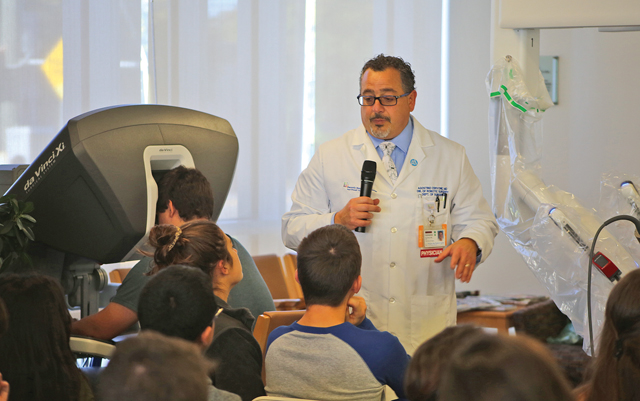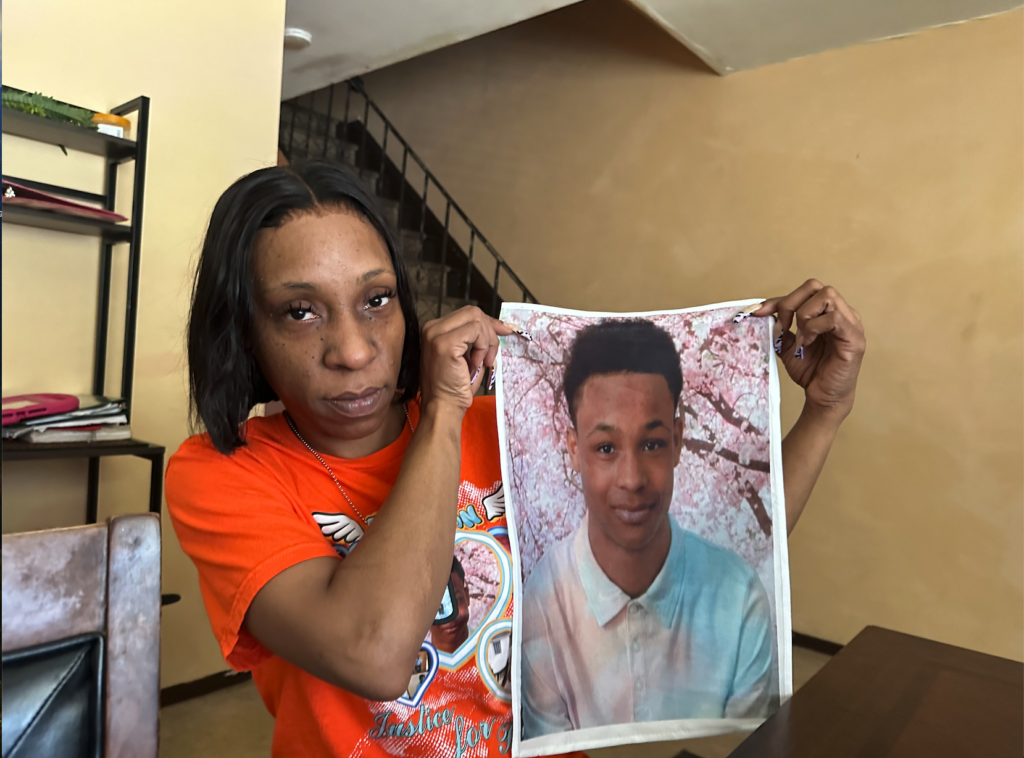Riverhead High School students use surgical robot at PBMC

Olivia Pizzuto sat behind a large console and looked into a computer screen, which showed her what the four robotic arms a few feet behind her were doing.
As she worked the controls, each arm in turn picked up a packet of lemon juice and dropped it into a foam cup. With each maneuver, her Riverhead High School classmates cheered.
Olivia, a 17-year-old AP biology student, was operating Peconic Bay Medical Center’s newest minimally invasive surgical robot, the da Vinci surgical system Xi. As part of a demonstration for AP biology and Robotics Club students, Olivia used the da Vinci to race against surgeon Dr. Agostino Cervone, who was using “the claw,” a robot made by RHS robotics club members. Each was tasked with picking up five items — Dr. Cervone picked up mini water bottles — and placing them in a cup or basket.
“It was really cool to beat a doctor who actually knows how to use robots,” said Olivia. She got her five lemon packets into a cup in the same amount of time Dr. Cervone got one water bottle into a basket.
Before the race, Dr. Cervone explained the benefits of the da Vinci surgical system Xi to the students.

Launched in spring 2014, the machine allows surgeons to make smaller incisions, provides better lighting and allows them to get clearer views of what they’re working on as compared to doing surgery without the machine.
The da Vinci comprises three components. First is the tower with the monitor. Similar to a computer hard drive, it is considered the “brains” of the robot and displays what the surgeon is looking at on a large screen.
Next are the arms, which move independently to physically complete the surgical tasks.
“One of the advantages of the Xi is that everything pivots on the head as opposed to the other robots, where you had to position the patient depending on where the anatomy was,” said Dr. Cervone, who has been using surgical robots since 2011. “We had to change the rooms around and it really becomes a hassle sometimes. With this, it comes in every time from the same side of the room, but because the head changes you can position everything a lot easier.”
Lastly is the console, where surgeons can use joysticks and foot pedals to direct the arms of the da Vinci, telling it where to go and what to do. It also gives the surgeon a 3D look into the area they are working on.
Dr. Cervone said using the da Vinci for surgeries n the area of the abdomen and on hernias, makes the work of the surgeon easier and more precise.
“When you do it by hand, not only do you have to make an incision big enough for your hand to fit in, you also need light to come in so you can see what you’re doing,” Dr. Cervone said. “With minimally invasive surgery, whether it’s robotic or laparoscopic, the light’s right there in the camera and you can get the camera way down there.”
Olivia also noted how easy the robot was to use.
“I thought since it’s with a hospital and doctors use it that it’d be kind of hard because they all have to know how to do it, but it’s a lot easier than it looks,” she said. “It’s super cool that I got to have this opportunity.”








